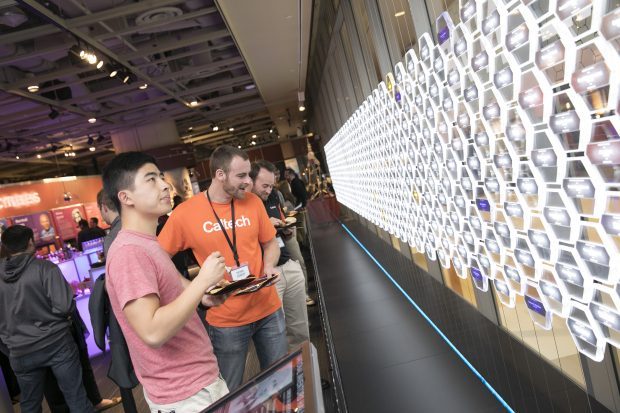Latest News
June 1, 2018
For today’s technology thinkers, innovation begins early in their career, often, at the collegiate level. That’s the premise that the National Inventors Hall of Fame sought to capitalize on in developing the Collegiate Inventors Competition.
Rini Paiva is the vice president, Recognition and Selection, for the National Inventors Hall of Fame. We spoke to him to learn more about the Collegiate Inventors Competition.
Digital Engineering: Can you provide an overview of the competition?
Rini Paiva: The Collegiate Inventors Competition was founded in 1990 to encourage and drive innovation and entrepreneurship. The competition brings together the nation’s brightest undergraduate and graduate students to showcase, recognize and award their cutting-edge research and discoveries. With the help of our sponsors, we have awarded more than $1 million to the country’s most innovative collegiate students.
DE: Can you tell us about some of the designs that are part of the event and how they came to be?
Paiva: Entries include outstanding inventions in disciplines as varied as medical devices, biotechnology, nanotechnology, renewable energy, robotics and systems engineering. Entries must be the original idea and work product of a student, or team of students, and an academic advisor. The invention must be a reduced-to-practice idea—or working model—and be capable of reproduction. Many of the entries that we receive are the result of a research assignment or senior capstone project.
DE: Can you provide some examples of past winners?
Paiva: This past year, team members Matthew Rooda and Abraham Espinoza (SwineTech) from the University of Iowa were awarded the undergraduate gold medal for their invention SmartGuard, which prevents piglet-crushing deaths by their mothers by monitoring the pitch, loudness and duration of squeals, and determining whether a piglet is in distress.
When a piglet is in distress, the device sends a vibration to a wearable patch on the mother, prompting her to stand and free her piglet. The SwineTech team also won the Arrow Innovation Prize from Arrow Electronics. This exclusive prize advanced the team to the final round of judging—all expenses paid—at the competition, and it included a private networking opportunity with a group of innovators from Arrow Electronics.
The graduate gold medal winner was Ning Mao from Boston University for her invention Engineered Probiotics, an engineered safe bacterium that inhibits the progression of a cholera infection. This bacterium provides early detection of cholera and helps contain the spread of the disease. In addition, the technology could be adapted to fight other types of bacterial infections.
DE: What drove the National Inventors Hall of Fame to sponsor the event and coordinate it?
Paiva: The National Inventors Hall of Fame, in partnership with the U.S. Patent and Trademark Office (USPTO), is the driving force behind lifelong innovation, paying forward America’s bright history of invention and securing our country’s competitive advantage for the future. We believe our role is to honor the individuals whose inventions have made the world a better place, and to ensure American ingenuity continues to thrive. This belief drives our mission: to recognize inventors and invention; celebrate our country’s rich, innovative history; inspire creativity and advance the spirit of innovation and entrepreneurship.
More Info
Subscribe to our FREE magazine, FREE email newsletters or both!
Latest News
About the Author
Jim Romeo is a freelance writer based in Chesapeake, VA. Send e-mail about this article to [email protected].
Follow DE






 Image courtesy of Jim Romeo/ National Inventors Hall of Fame.
Image courtesy of Jim Romeo/ National Inventors Hall of Fame.